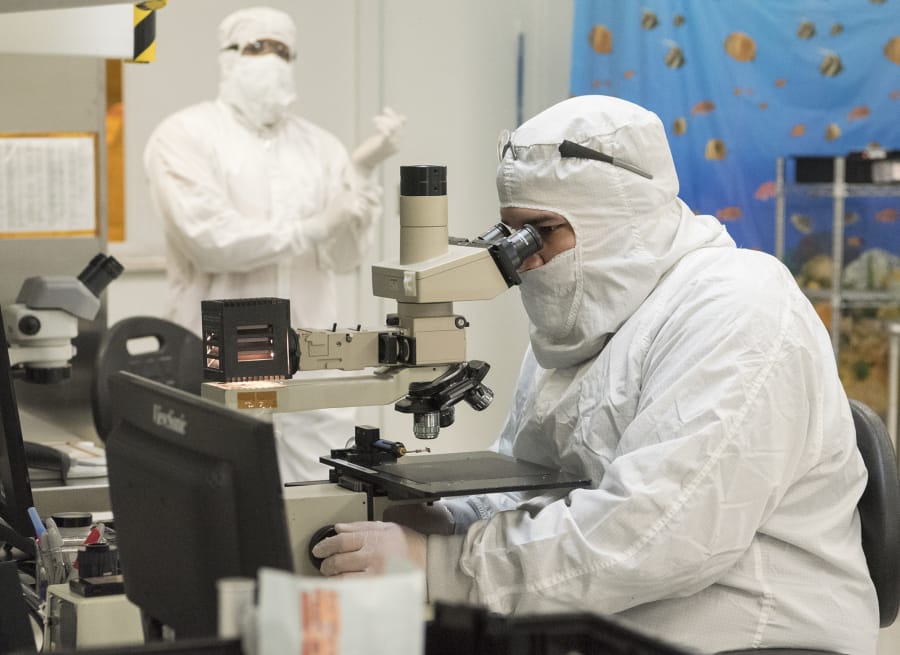Slower demand in some sectors and increased Chinese competition on prices led to lower sales and earnings in the third quarter for nLIGHT, the Vancouver-based manufacturer of industrial lasers.
Revenue for the quarter was reported at $43.8 million with a gross margin of 29.6 percent, compared with revenue of $51 million and a gross margin of 35.4 percent in the third quarter of 2018. The company reported a net loss of $800,000, or 2 cents per share, compared with a net income of $4 million or 10 cents per share in the third quarter of 2018.
“Our third quarter results reflect an operating market that remains challenging,” CEO Scott Keeney said in a conference call with investors and analysts.
During the Monday afternoon call, Chief Financial Officer Ran Bareket said the sales declines were in the industrial and microfabrication markets, while the aerospace and defense market grew by 13 percent year-over-year, continuing a recent pattern of double-digit growth for that sector.
The aerospace and defense sector represented 26 percent of nLIGHT’s overall revenue for the third quarter.
Breaking it down geographically, Bareket said sales to the Chinese market grew slightly, up 4 percent year-over-year, while sales to the North American market declined by 19 percent and sales to the rest of the world dropped 30 percent.
Bareket cited the U.S.-China trade war as one of the factors that negatively impacted the firm’s gross margin, although he said the difficulties were partially offset by nLIGHT’s continued push into the higher-power laser market.
An analyst on the call asked if there would be a point where high-power lasers would start accounting for a majority of nLIGHT’s revenue. Keeney replied that he couldn’t predict when that might occur, but said the growth rate was substantial. High-power lasers accounted for more than 40 percent of revenue in the third quarter, he said.
“That’s up significantly from where we were just a year ago,” he said.
Keeney and Bareket also attributed the decline in the microfabrication market in part to the trade war, saying that some large customers had built up oversized inventories in the first half of the year to try to stay ahead of new tariffs. Keeney said he expected that discrepancy to lessen in the first half of 2020.
Keeney put a large emphasis on areas that he said would drive future growth for nLIGHT, including new applications for the company’s Corona line of programmable fiber lasers and new products aimed at serving welding applications, in addition to the company’s more traditional cutting market.
Earlier on Monday, the company announced a new portfolio of fiber lasers ranging from 3 to 15 kilowatts with an integrated beam switch designed to aid in welding and cladding operations. The company also announced two new versions of the Corona laser, the CFX-12000 and the CFX-5000. At 12 kilowatts, the company said the CFX-12000 is the highest power laser in the product family.
Keeney also discussed the growth of directed energy applications in the aerospace and defense market. Those uses currently account for only a small percentage of the company’s sales, he said, but he expects to see substantial growth in that area in the next two to five years as more customers begin to utilize lasers for defense.
“We view directed energy as a key long-term growth opportunity for nLIGHT,” he said.
Despite a decline in the microfabrication market observed this year, Keeney said he still expected to see future growth in the space, citing consumer electronics as one example. New laser purchases in that market tend to be fueled by changes in electronics manufacturers’ supply chains. That changeover has slowed in recent years, he said, but the advent of 5G cellular networks will likely spur a round of supply chain retooling.
Looking to the fourth quarter, the company said it expects revenues between $36 million and $40 million, with a gross margin range of 25 percent to 28 percent.




